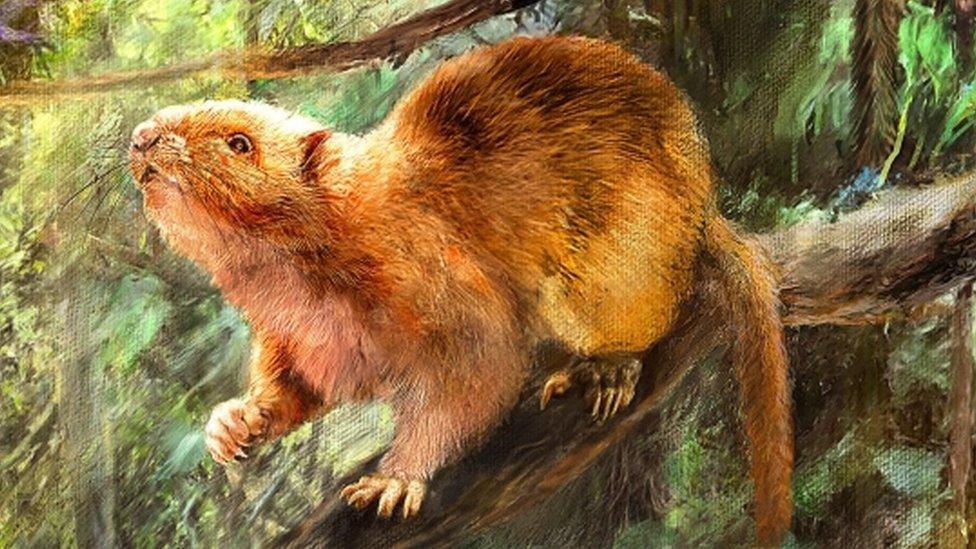Scientists have discovered giant cloud rat fossils!
- Published
- comments

The rodents are believed to have been twice the size of the grey squirrel!
You're probably pretty familiar with rodents like rats, mice and squirrels, but have you ever heard of a giant cloud rat?
Modern-day cloud rats can be found in forests in the Philippines. They live in treetops which is where they get their name from, and are active at night, making them nocturnal animals.
Cloud rats can still be spotted in their native environment today, but scientists have discovered three new species, which are now extinct, that are believed to have been twice the size of grey squirrels!
The researchers discovered fossil remains of the creatures in Callao Cave and several smaller caves in the town of Penablanca in Cagayan, Philippines.
They examined their bones and teeth to find out more about what they would have looked like and the scientists say these giant cloud rats, which disappeared a few thousand years ago, were fluffy with big bushy tails.
"The bigger ones would have looked almost like a woodchuck (groundhog) with a squirrel tail," said Larry Heaney who oversees mammals at the Field Museum in Chicago.
"Cloud rats eat plants, and they've got great big pot bellies that allow them to ferment the plants that they eat, kind of like cows.
"They have big fluffy or furry tails. They're really quite cute."
Did you know that giant cloud rats are also known as 'cloudrunners'?
Scientists discovered some of the species fossils in the Callao Cave in the Philippines
Humans are believed to have possibly played a part in the extinction of former cloud rat species.
"Their abrupt disappearance just a few thousand years ago leaves us to wonder if they were big enough that it might have been worthwhile to hunt and eat them," said Larry.
The Callao Cave where some of the cloud rat fossils were found was also home to an ancient human species that lived around 67,000 years years ago.
Some of the remains of the rodent species were found in the same layer where the human fossils was discovered, making them nearly 70,000 years old!
Other remnants are thought to be around 2,000 years old, which is around the time when these former cloud rat species suddenly disappeared.
Researchers say it means the ancient giant cloud rats could have been around for at least 60,000 years.
"Our records demonstrate that these giant rodents were able to survive the profound climatic changes from the Ice Age to current humid tropics that have impacted the earth over tens of millennia," said Philip Piper from the Australian National University.
- Published13 October 2020
- Published25 September 2020
- Published14 January 2021
